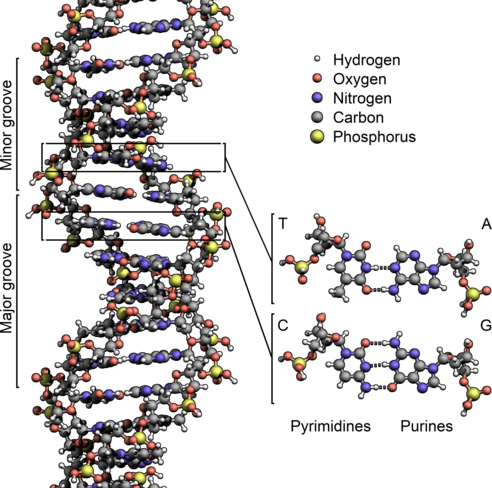This problem set is about DNA data and methods typically applied to this kind of data. As a reminder, DNA is a molecule that encodes genetic instructions for living organisms. DNA is typically found as a double-stranded helix, in which each strand corresponds to a sequence of nucleotides. Each nucleotide consists of a nucleobase (guanine, adenine, thymine, or cytosine) attached to sugars, which are in turn separated from each other by phosphate groups:

(image from Wikipedia)
The nucleobases are commonly referred to with the letters G (guanine), A (adenine), T (thymine), and C (cytosine). The nucleobases form pairs between the two strands: G pairs with C, and T pairs with A.
DNA is therefore most commonly represented as a sequence of nucleobases, such as GATTACACCTCATTATAAA.
For more information about DNA, see the wikipedia page in German or English.
In this problem set, we will be working with fake genetic data, since real-life data often has added complications, but the functions and techniques uses here are the same or very similar to techniques used on real data.